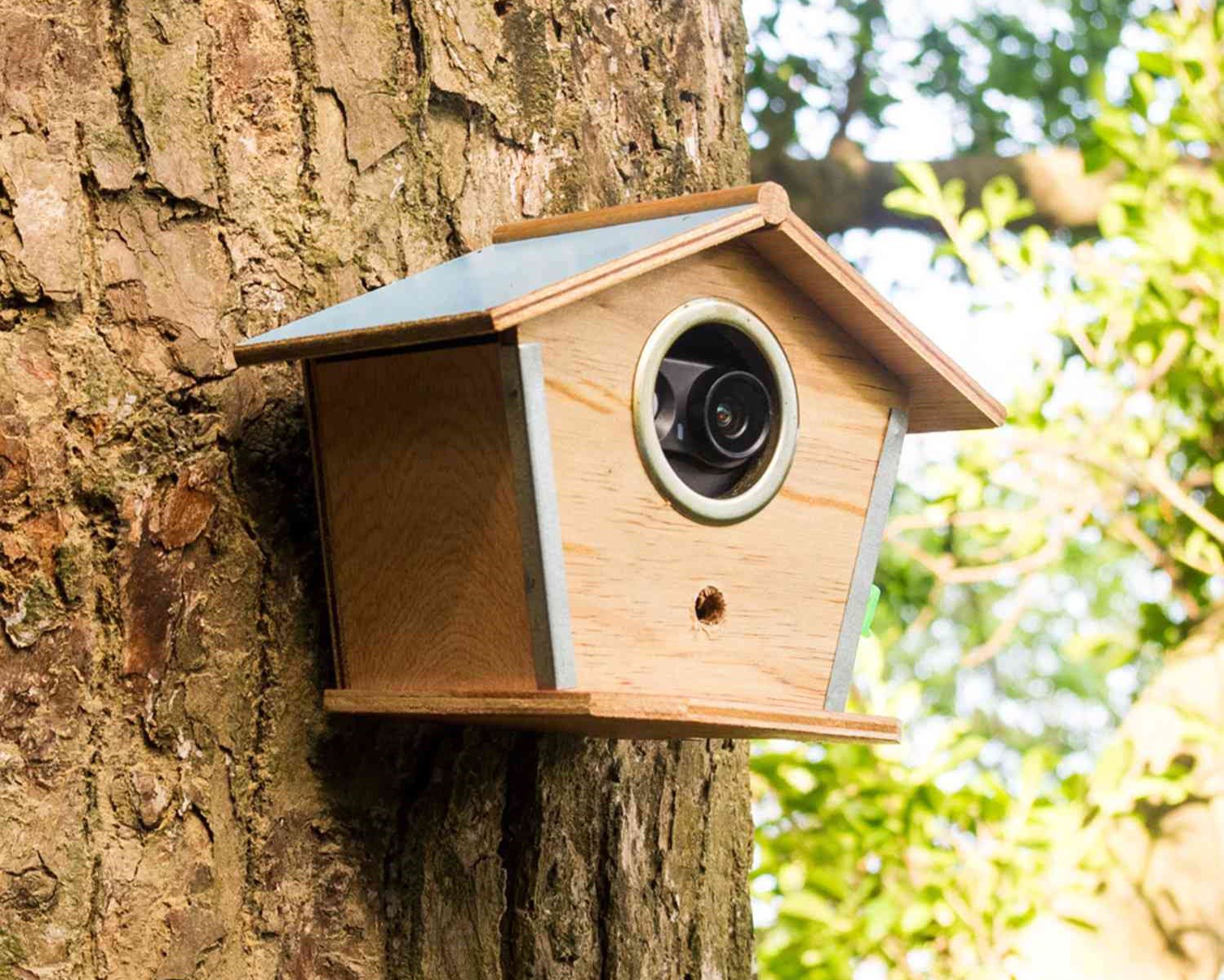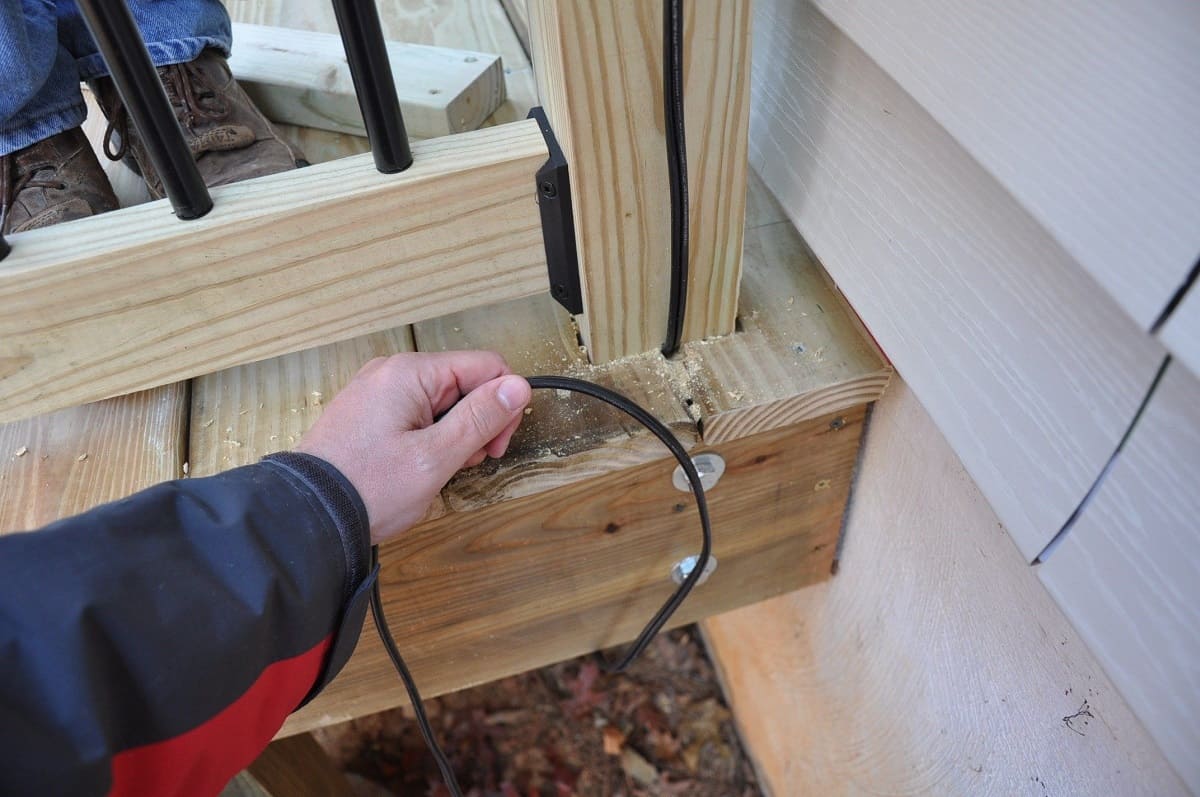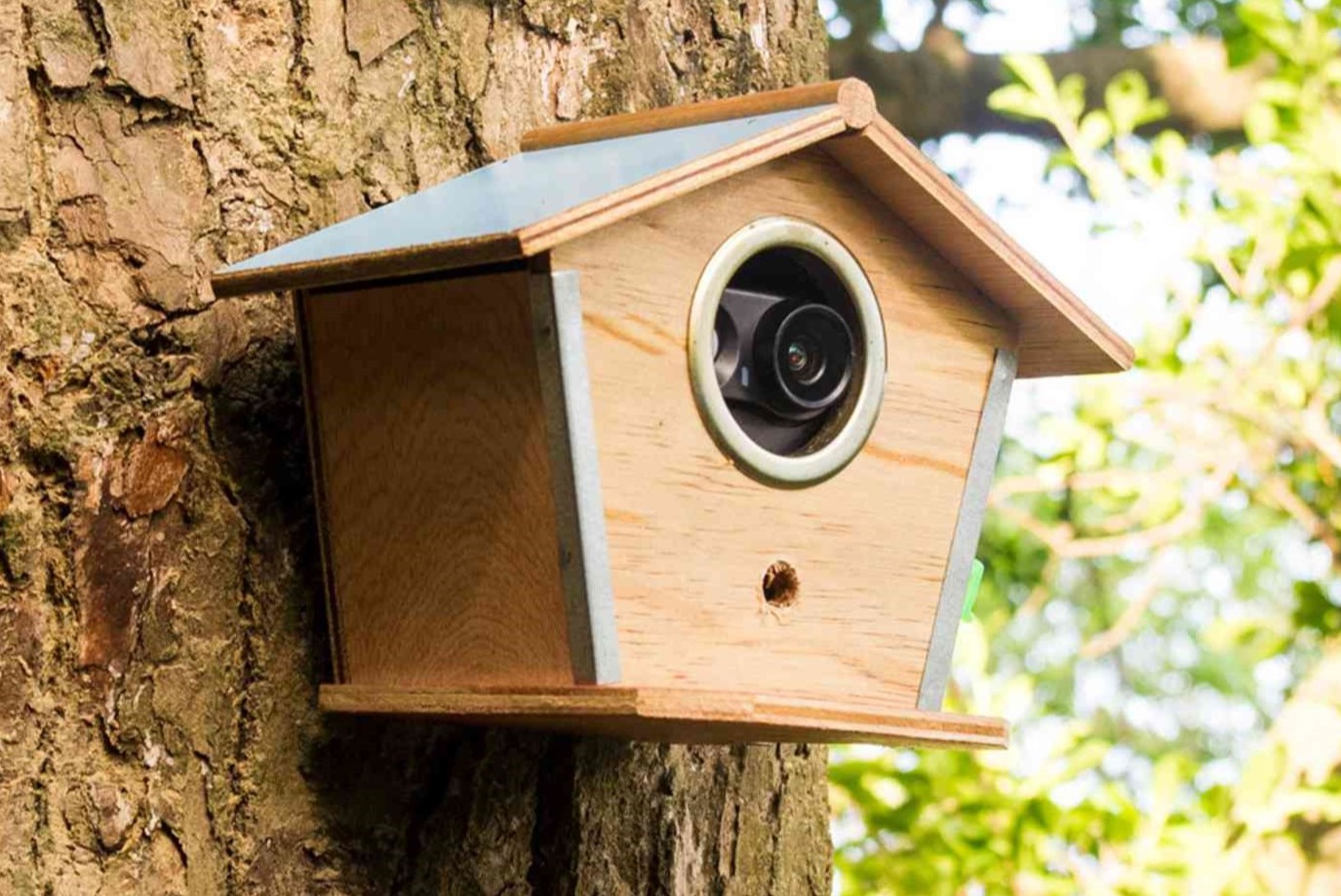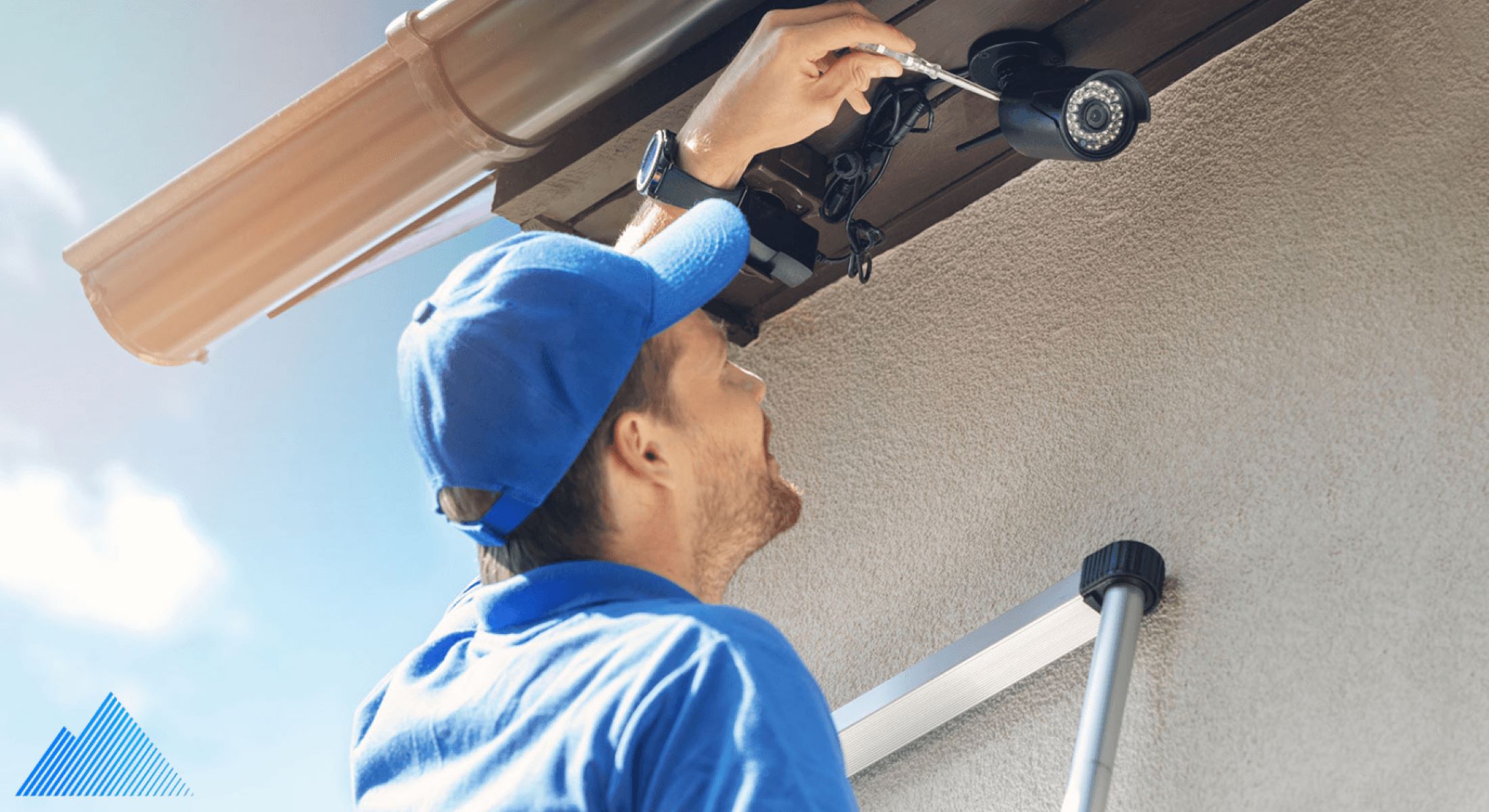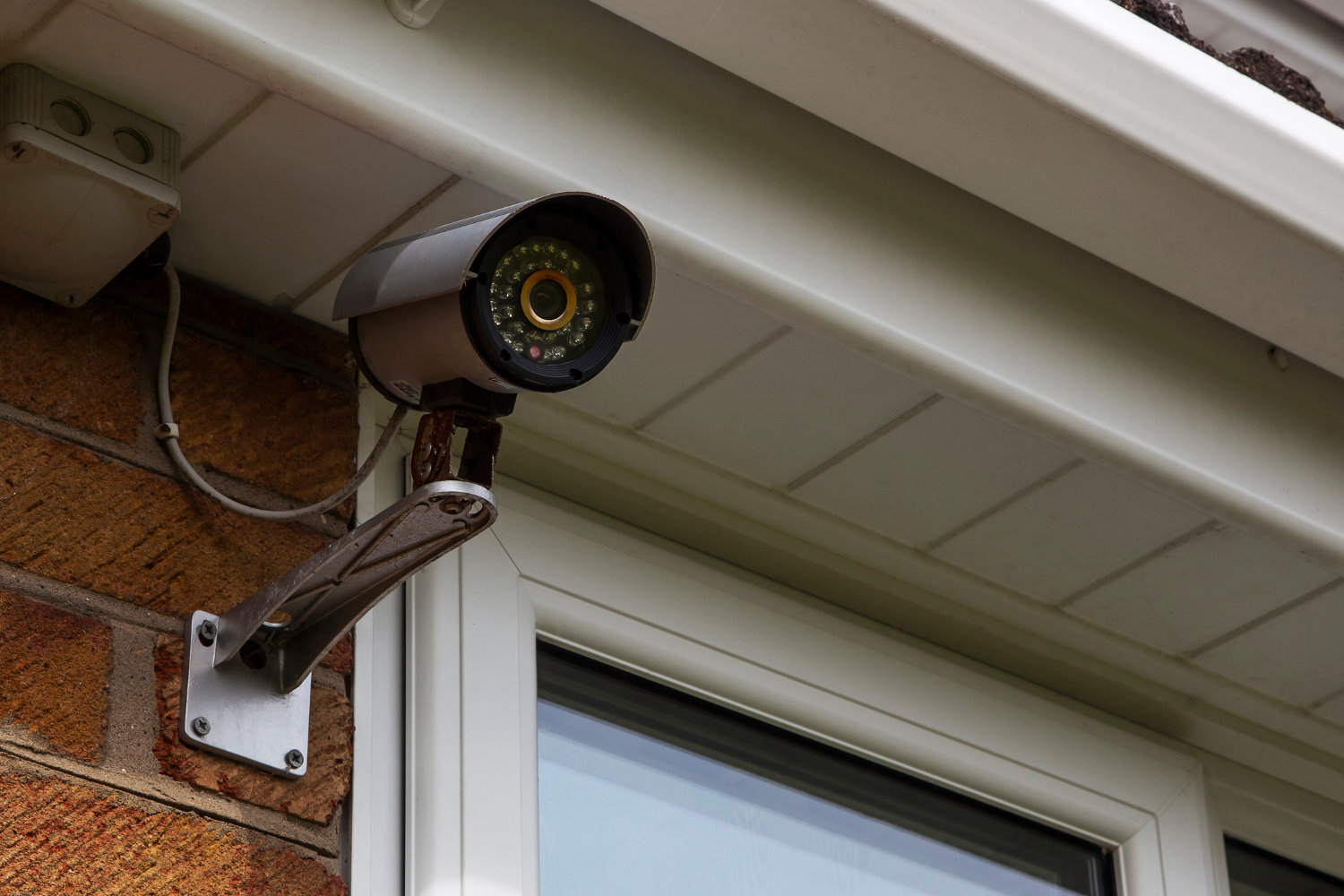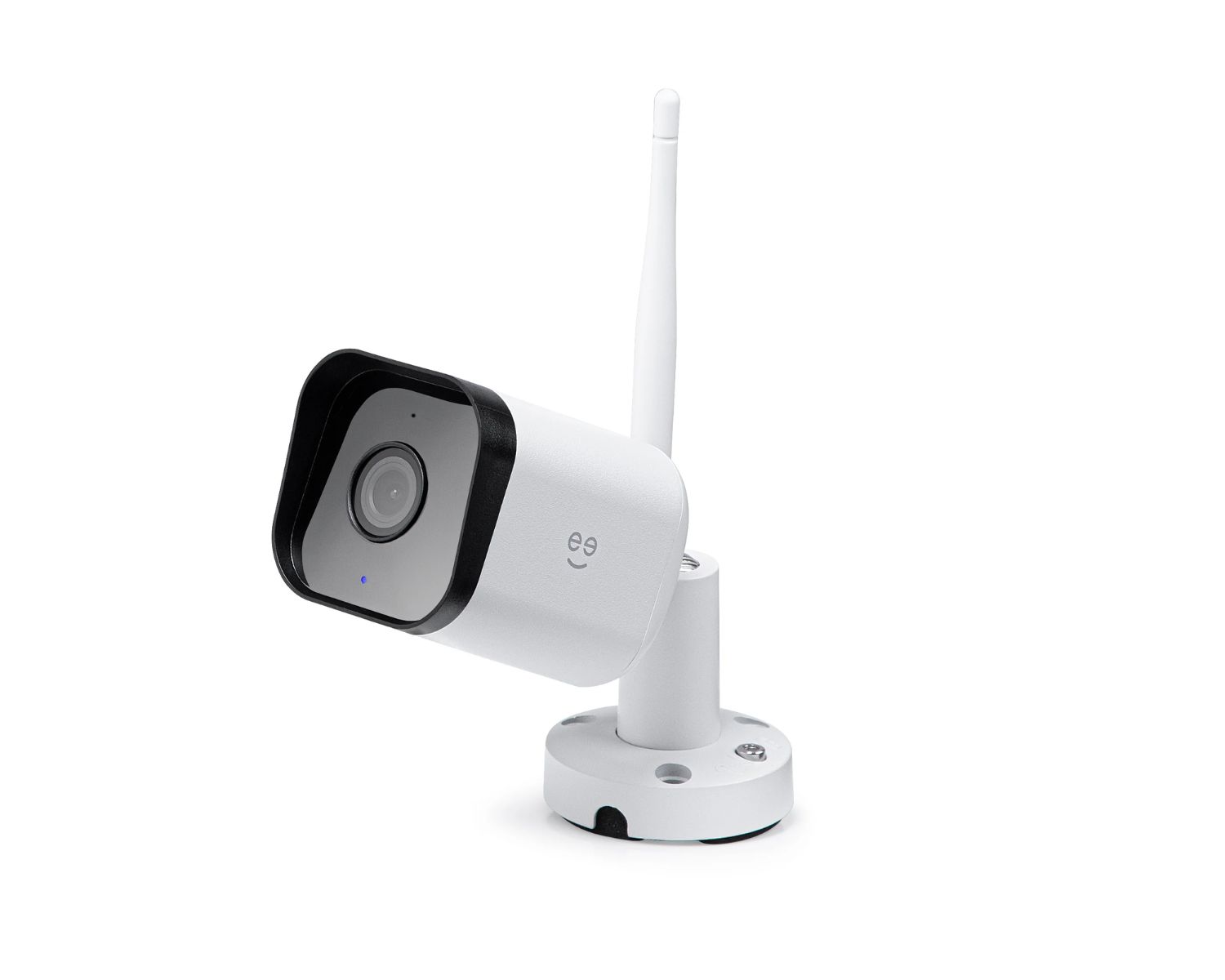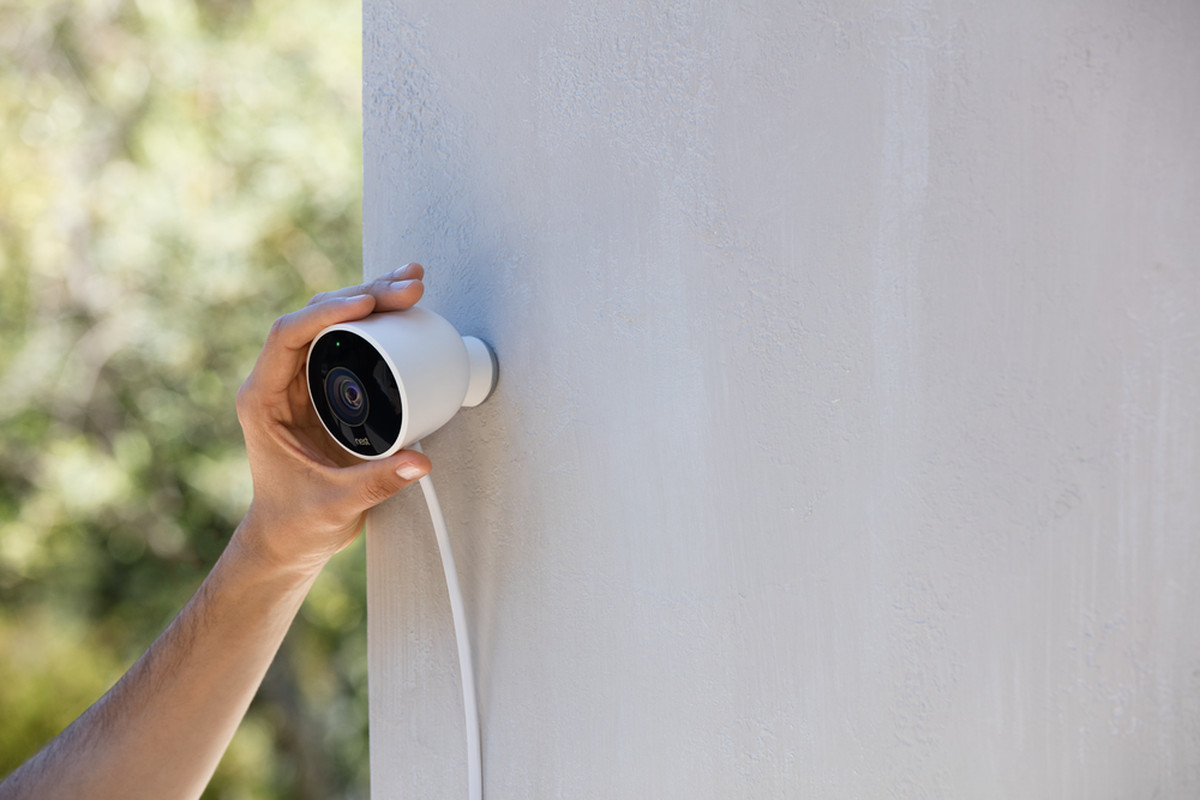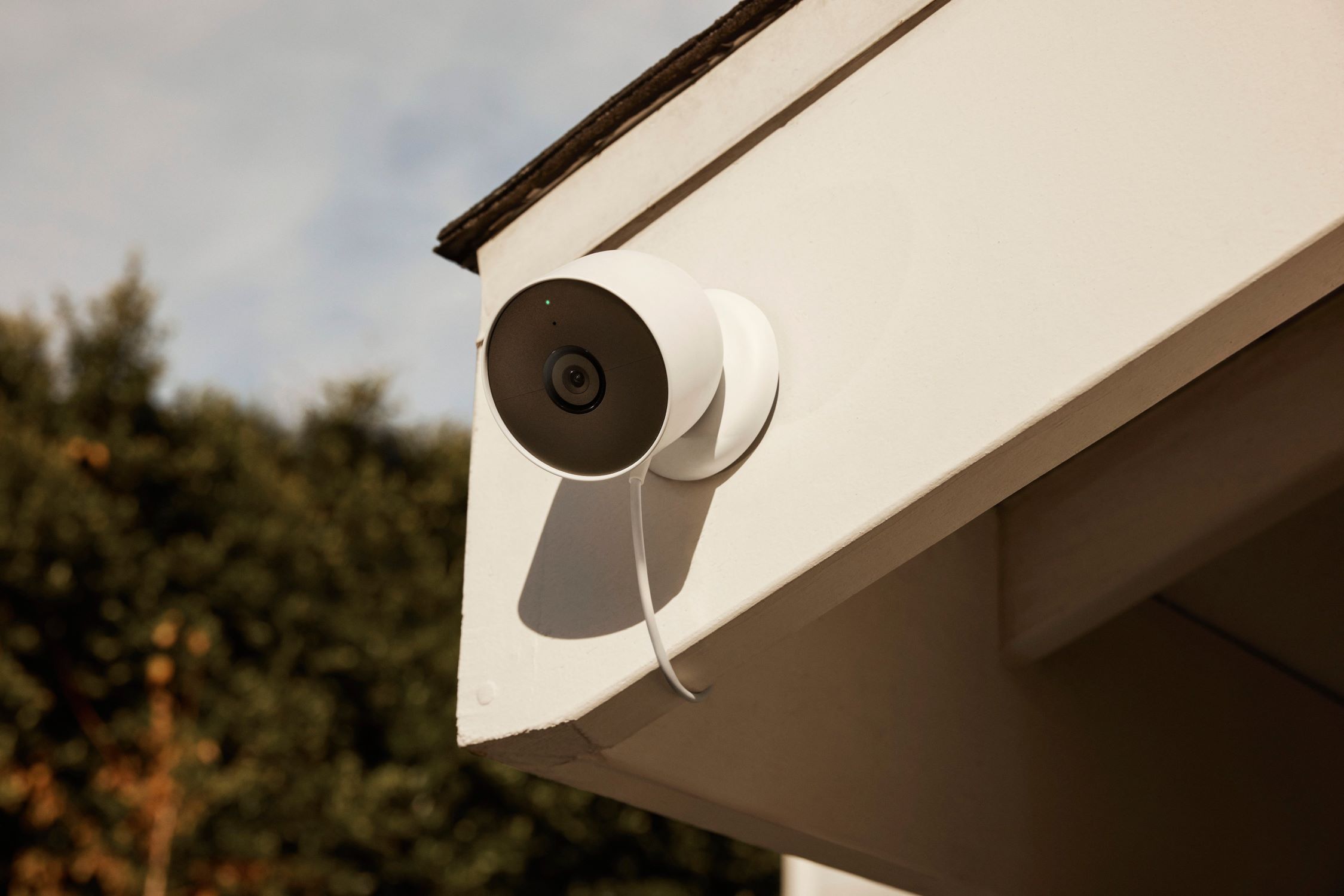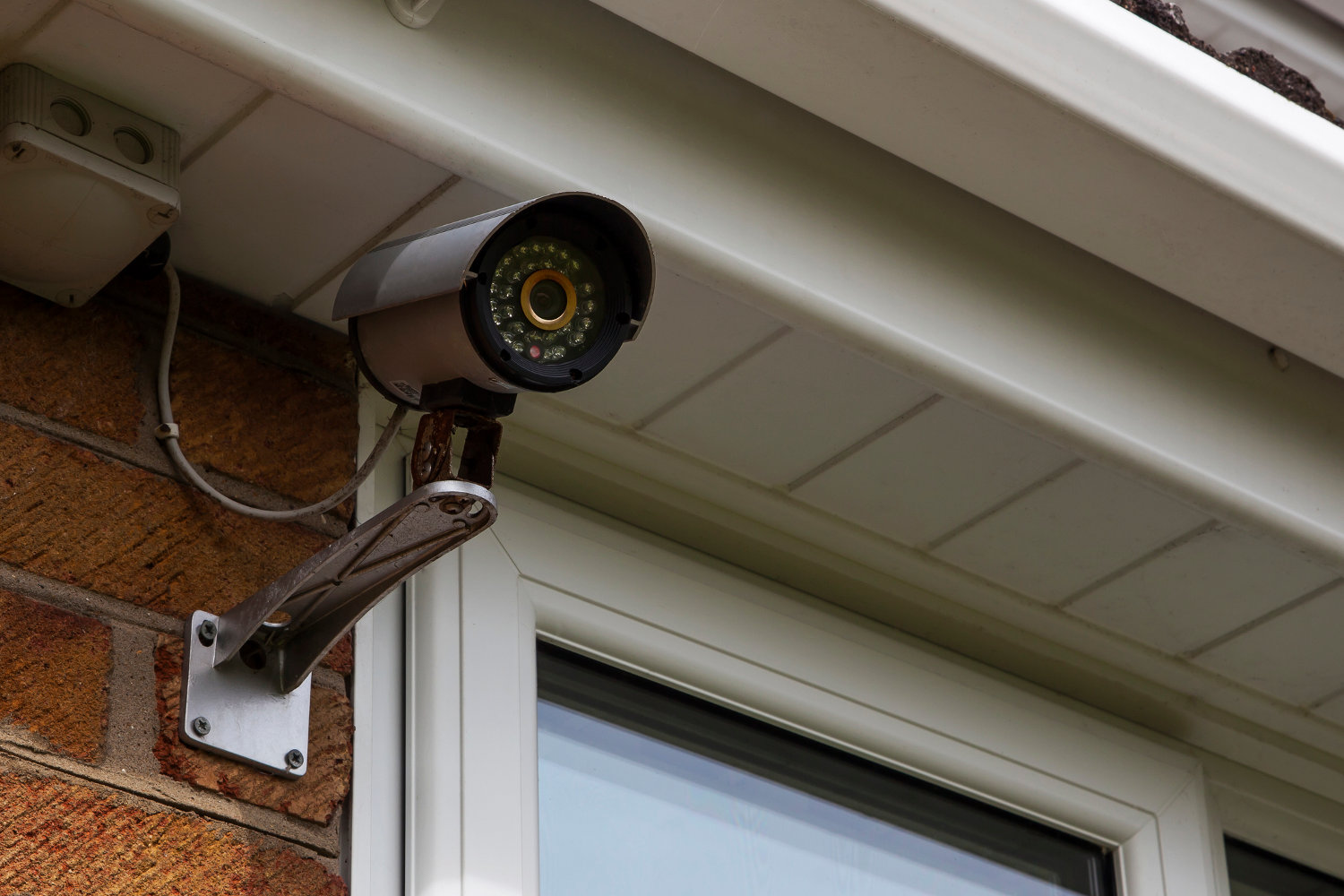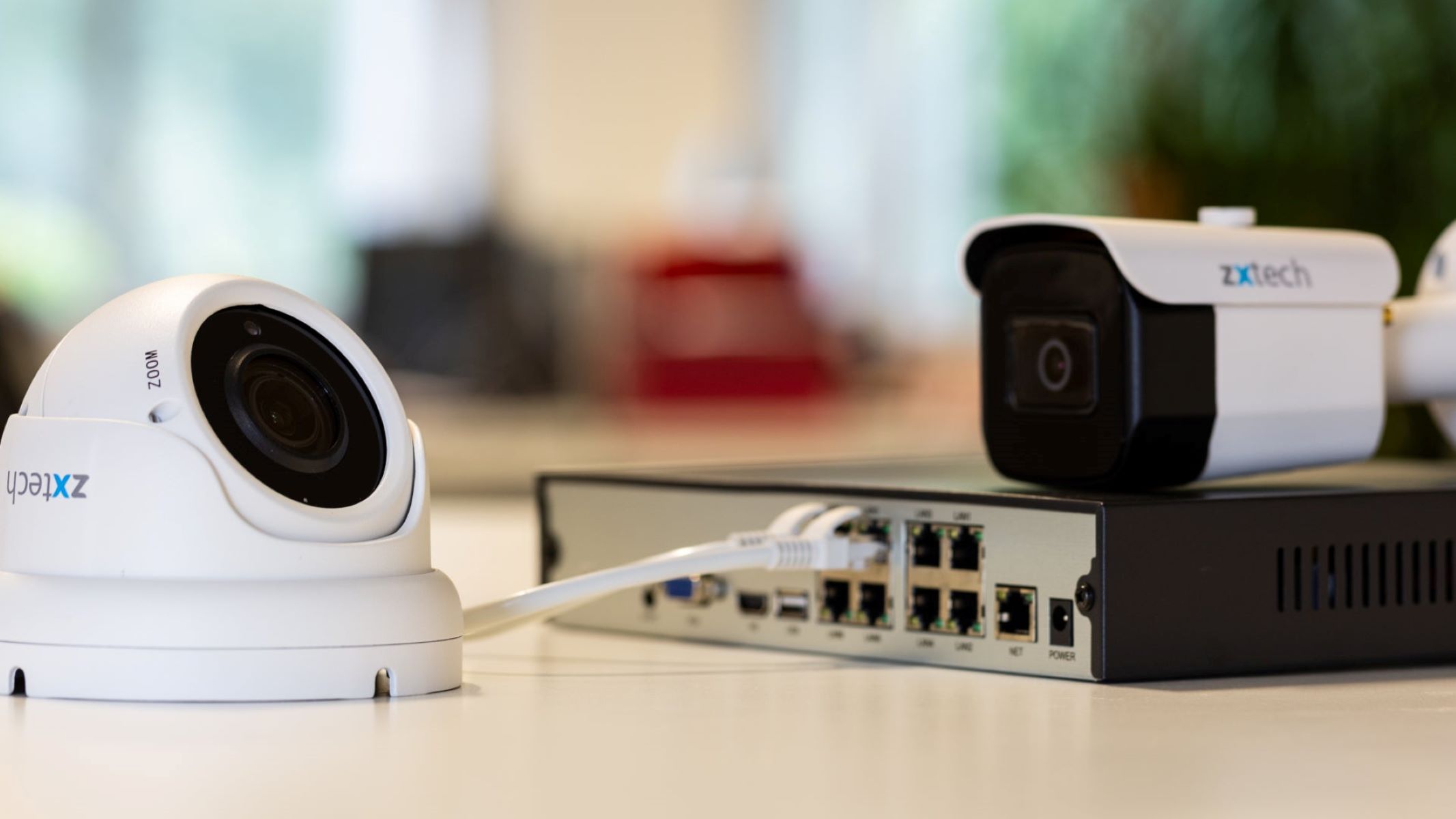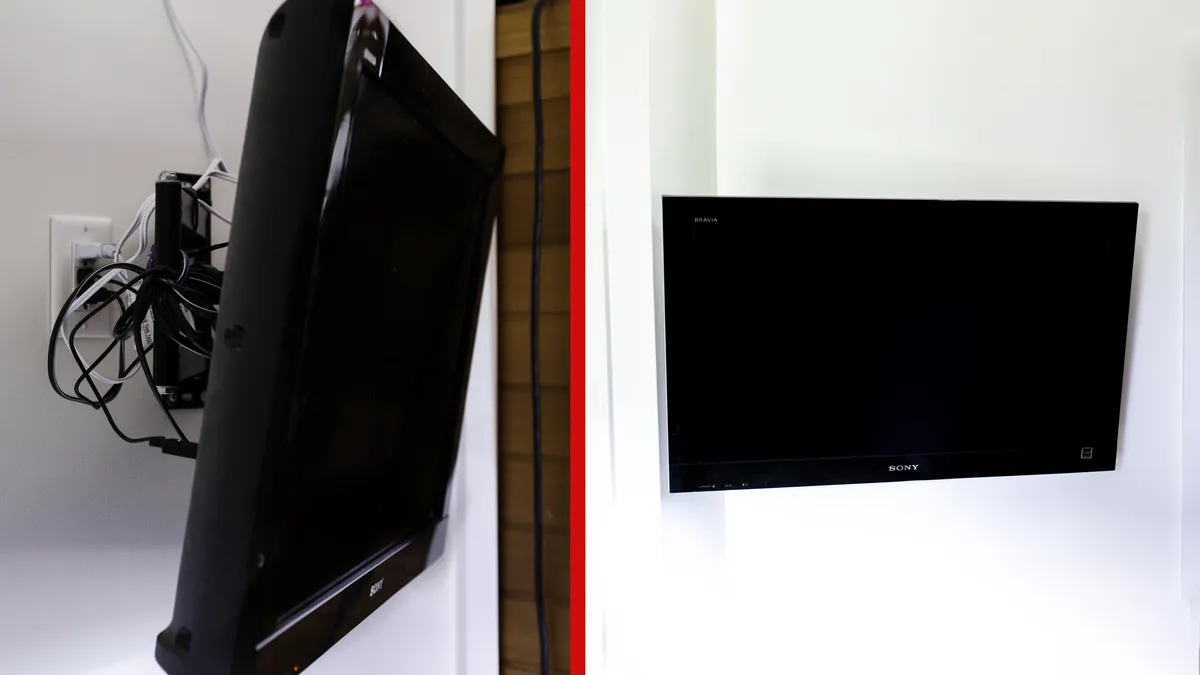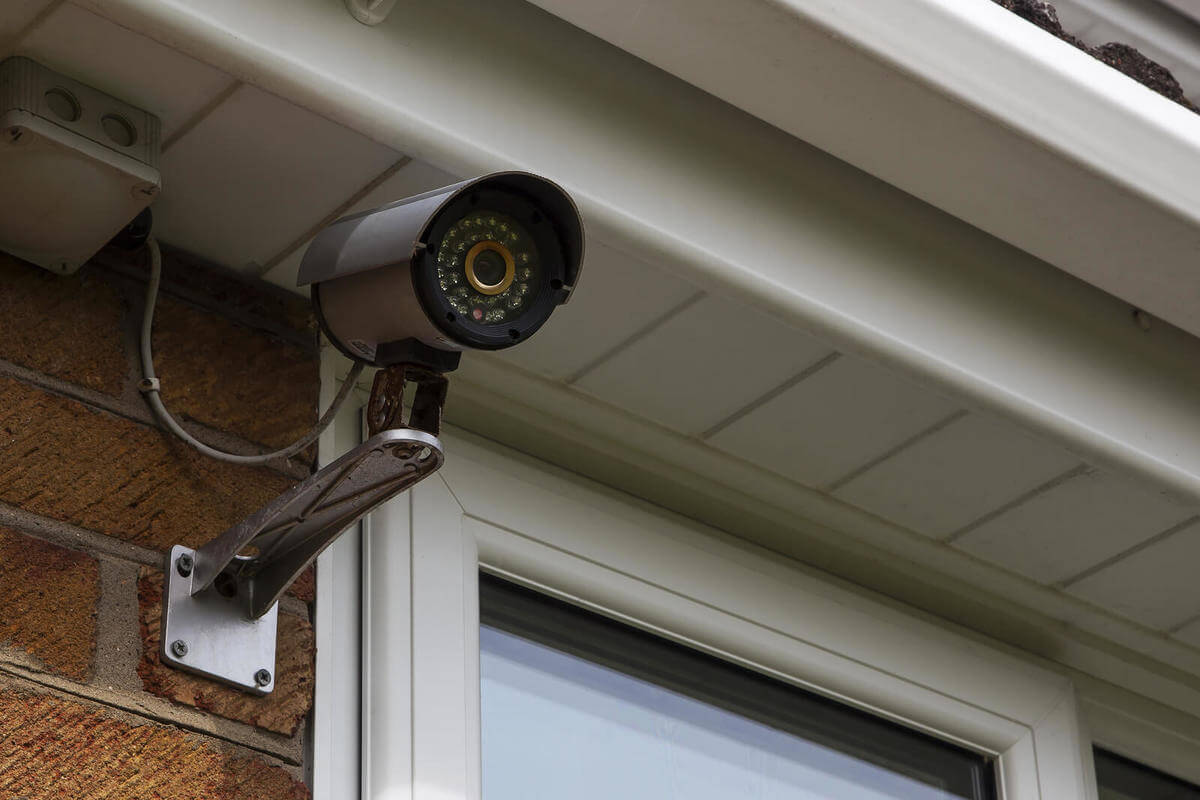Home>Home Security and Surveillance>How To Hide Outdoor Camera Wires
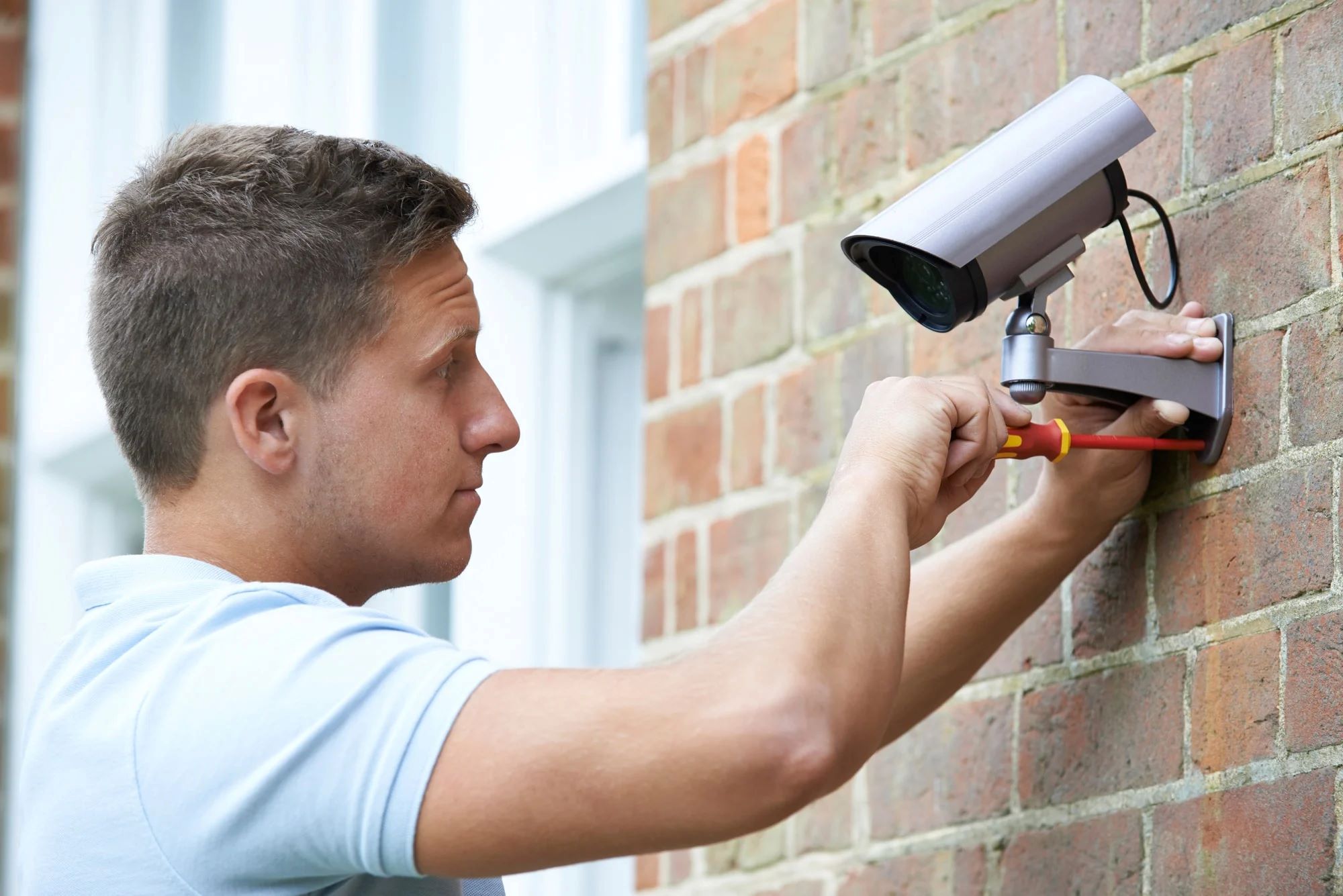

Home Security and Surveillance
How To Hide Outdoor Camera Wires
Modified: March 6, 2024
Learn how to hide outdoor camera wires for your home security and surveillance. Keep your camera installation neat and discreet with these effective wire hiding techniques.
(Many of the links in this article redirect to a specific reviewed product. Your purchase of these products through affiliate links helps to generate commission for Storables.com, at no extra cost. Learn more)
Introduction
When it comes to home security and surveillance, outdoor cameras play a crucial role in keeping your property safe. However, the unsightly wires that come with these cameras can be a headache to deal with. Not only do they spoil the aesthetics of your home, but they also pose potential tripping hazards. Thankfully, there are several effective methods to hide outdoor camera wires and maintain a clean and seamless appearance.
In this comprehensive guide, we’ll take you through the steps to hide outdoor camera wires. From planning the installation to choosing the right wire hiding method, we’ll cover everything you need to know to achieve a professional-looking setup without compromising the functionality of your cameras.
Before we dive into the details, it’s important to understand the importance of hiding outdoor camera wires. Beyond cosmetic reasons, concealing the wires also protects them from potential damage caused by weather elements or accidental tampering. By taking the time to hide your outdoor camera wires properly, you can ensure the longevity and optimal performance of your security system.
Planning plays a crucial role in achieving a successful wire hiding endeavor. Before you begin the installation process, evaluate the layout of your property and determine the best locations for your outdoor cameras. Take into consideration the areas you want to monitor and choose spots that offer optimal coverage while being discreetly positioned.
Once you have a clear plan in place, it’s time to select the wire hiding method that best suits your needs. There are several options available, each with its own advantages and considerations. Common methods include burying wires underground, using conduit for wire protection, installing wire-molding, or concealing wires along fences or walls.
Digging trenches can be an effective way to hide outdoor camera wires. This method involves creating shallow trenches in your yard to bury the wires. It’s important to ensure you dig deep enough to protect the wires from potential damage and to comply with any local regulations regarding buried wires.
Conduit is another popular option for wire protection. This involves using a plastic or metal tube to encase the wires and keep them out of sight. Conduit is durable and offers good protection against the elements, making it a reliable choice for outdoor installations.
If you’re looking for a simpler and more aesthetically pleasing solution, consider installing wire-molding. This involves attaching a plastic or metal channel along the walls or eaves of your home to conceal the wires. Wire-molding is available in various sizes and finishes, allowing you to choose the option that blends seamlessly with your home’s architecture.
Another option is to conceal the wires along fences or walls. By strategically attaching the wires along these surfaces, you can minimize their visibility while ensuring they are protected. This method works well if you have existing fences or walls that can serve as a natural hiding spot for the wires.
For a more permanent and discreet solution, burying the wires underground may be the best option. This requires digging a trench and burying the wires at a sufficient depth. It’s important to use appropriate outdoor-rated cables and ensure the trench is deep enough to prevent accidental digging or damage.
Wireless technology has come a long way, and many outdoor cameras now offer wireless connectivity options. If feasible, opting for wireless cameras can eliminate the need for hiding wires altogether. However, keep in mind that wireless cameras may require a power source, so make sure to plan accordingly.
In the final steps of hiding your outdoor camera wires, be sure to seal any openings or gaps to ensure a tidy finish. Use waterproof sealants or caulking to protect the wires and prevent any potential water damage. Additionally, secure the wires using cable ties or clips to keep them neat and organized.
By following these steps, you can successfully hide your outdoor camera wires and achieve a clean and professional-looking setup. Remember, proper planning and execution are key, so take your time to assess your options and choose the method that best suits your needs. With a little effort and creativity, you can enhance the security of your home while maintaining its visual appeal.
Key Takeaways:
- Hiding outdoor camera wires is crucial for protecting them from damage, enhancing security, and maintaining a neat appearance. Methods like burying wires underground and using conduit offer effective solutions.
- Proper planning and execution are essential for achieving a successful wire hiding endeavor. Consider factors like power source availability and local regulations to ensure an efficient and visually appealing installation.
Read more: How To Hide Wires On Nest Outdoor Camera
Importance of hiding outdoor camera wires
Hiding outdoor camera wires may seem like a purely aesthetic concern, but it goes far beyond just improving the visual appeal of your home. There are several important reasons why you should prioritize concealing the wires of your outdoor security cameras.
First and foremost, hiding the wires helps to ensure the longevity and optimal performance of your security system. Outdoor camera wires are exposed to various environmental factors such as rain, snow, extreme temperatures, and UV rays. Without proper protection, these elements can damage the wires over time, leading to glitches, malfunctions, or even complete failure of your cameras. By concealing the wires, you create a shield of protection, keeping them safe from the elements and extending their lifespan.
Apart from protecting the wires from weather damage, hiding them also reduces the risk of accidental tampering. Exposed wires are tempting targets for mischief-makers or even burglars. By making the wires less visible and accessible, you eliminate the possibility of someone intentionally cutting or damaging them. This ensures the uninterrupted operation of your security cameras, giving you peace of mind knowing that your property is continuously monitored.
Another key reason to hide outdoor camera wires is to enhance the overall security of your property. Visible wires can act as indicators of a security system, letting potential intruders know that your home is being monitored. This can sometimes work as a deterrent, but more sophisticated criminals may see it as a challenge to disable or bypass the cameras. By concealing the wires, you maintain an element of surprise and maintain the covert nature of your surveillance, increasing the effectiveness of your security measures.
Furthermore, hiding outdoor camera wires plays a vital role in maintaining the aesthetics of your property. Many homeowners take pride in their homes and invest a lot of time and effort into maintaining their curb appeal. Exposed wires can significantly detract from the overall visual appearance of your property, creating a cluttered and unsightly look. By hiding the wires, you create a clean and seamless look that blends in with the architectural features of your home, ensuring that your surveillance system does not detract from its beauty.
Additionally, hiding outdoor camera wires helps to mitigate potential safety hazards. Tripping over exposed wires is a common risk, especially if you have children, pets, or elderly family members at home. Concealing the wires eliminates this hazard, providing a safer environment for everyone on your property.
Overall, the importance of hiding outdoor camera wires cannot be overstated. It not only protects the longevity and performance of your security system but also enhances the overall security, aesthetics, and safety of your property. By concealing the wires, you create a seamless and professional-looking setup while maintaining the effectiveness and reliability of your outdoor cameras. So don’t overlook this crucial step when installing your security system – take the time to hide those wires and reap the numerous benefits that come with it.
Planning the camera installation
Proper planning is essential when it comes to installing outdoor cameras and hiding their wires. By taking the time to plan, you can ensure optimal camera placement, coverage, and wire concealment. Here are some key factors to consider during the planning phase:
1. Determine the areas to monitor: Start by identifying the specific areas you want to monitor around your property. Common areas include entry points, driveways, gardens, patios, and high-risk zones. Assessing the layout of your property and understanding your security needs will help you determine the number and location of cameras required.
2. Assess camera placement: Once you’ve identified the areas to monitor, consider the best spots to position your outdoor cameras. Look for strategic positions that provide maximum coverage and minimize blind spots. Depending on the type of camera, you may need to consider factors such as viewing angle, range, and mounting options. Remember to place the cameras at a height that is not easily accessible to intruders, yet allows for effective monitoring.
3. Concealment options: While planning the camera placement, simultaneously consider the various options available to hide the wires. This includes thinking about the specific hiding methods that will work best for each camera location. Factors such as proximity to power sources, access to walls or fences, and visibility should be taken into account. It’s important to choose hiding methods that are practical, efficient, and in line with your aesthetic preferences.
4. Power source availability: Determine the power source requirements for your cameras. Some outdoor cameras can be powered by batteries, solar panels, or electrical outlets. Determine the availability and proximity of power sources to each camera location. If power outlets are not conveniently located, consider alternative power options or consult a professional electrician to find the best solution.
5. Consider weatherproofing: Outdoor cameras are exposed to various weather conditions. Ensure that your chosen cameras are weatherproof and have the necessary protection against rain, snow, and extreme temperatures. This will ensure the longevity and performance of your cameras, as well as the safety of the hidden wiring.
6. Understand local regulations: Depending on your location, there may be specific regulations regarding the installation of outdoor security cameras and wire concealment. Familiarize yourself with any local ordinances or building codes that may impact your installation process. This will ensure compliance and prevent any potential issues in the future.
By thoroughly planning your camera installation, you can set a solid foundation for effectively hiding the outdoor camera wires. This will not only maximize the functionality and performance of your surveillance system but also ensure a seamless and aesthetically pleasing setup. So take the time to carefully assess your property, identify optimal camera placement, and consider the wire hiding options that will work best for your needs. A well-executed plan will make the installation process smoother and the end result more rewarding.
Choosing the right wire hiding method
When it comes to hiding outdoor camera wires, there are several effective methods to choose from. The right wire hiding method will depend on factors such as the layout of your property, accessibility of power sources, the type of camera installation, and your aesthetic preferences. Here are some common wire hiding methods to consider:
1. Digging trenches: This method involves burying the wires underground by creating shallow trenches. It provides a clean and permanent solution to hide the wires. Digging trenches requires careful planning and consideration, ensuring that the wires are buried at a sufficient depth and protected from accidental damage. This method is ideal for installations where the wires need to run across open spaces or walkways.
2. Conduit installation: Utilizing conduit involves placing the wires inside a protective tube made of plastic or metal. Conduit provides excellent protection against weather elements and accidental damage. It can be surface-mounted or buried underground, depending on your preference and requirements. Conduit comes in different sizes and finishes to match your home’s aesthetics. This method works well for installations that require added durability and flexibility.
3. Wire-molding: Wire-molding is a popular method for hiding camera wires along walls or ceilings. It involves attaching a plastic or metal channel that conceals the wires while blending with the surrounding surface. Wire-molding is easy to install and provides a neat and professional look. It allows for easy access if you need to make any adjustments or additions to the wiring. This method is ideal for indoor installations or when hiding wires along exterior walls.
4. Concealing wires along fences or walls: If you have existing fences or walls around your property, this method can be a practical and cost-effective solution. By carefully attaching the wires along the structures, you can hide them from view while also providing some protection. This method works well for properties with clear boundaries or where the camera locations align with existing fences or walls.
5. Burying wires underground: Similar to digging trenches, burying the wires underground provides a permanent and discreet solution. This method requires digging a deeper trench and burying the wires at a sufficient depth. It’s crucial to use outdoor-rated cables that can withstand exposure to moisture and soil conditions. Burying wires underground ensures complete invisibility while protecting them from potential damage or tampering.
6. Wireless technology: One of the most convenient options for wire-free installations is using wireless outdoor cameras. These cameras transmit video signals wirelessly to a receiver or cloud storage, eliminating the need for physical wires running between the camera and the recording device. However, keep in mind that wireless cameras still require a power source, so plan accordingly. Wireless technology provides a clean and hassle-free installation but may require careful consideration of Wi-Fi range and signal strength.
When choosing the right wire hiding method, consider factors such as the level of protection required, budget, accessibility, and future maintenance needs. You may also want to consult with a professional installer or electrician to ensure that you select the most suitable method for your specific situation.
By selecting the right wire hiding method, you can achieve a clean and professional-looking installation while maintaining the functionality and protection of your outdoor security cameras. So assess your options, weigh the pros and cons, and choose the method that best fits your needs and preferences. With the right approach, you can create a seamless and aesthetically pleasing surveillance system that enhances the security of your property.
Digging trenches for wire concealment
Digging trenches is a common method used to conceal outdoor camera wires. This method involves creating shallow trenches in your yard or driveway to bury the wires, providing a clean and permanent solution to hide them from view. Here are the key steps to follow when using this wire hiding method:
1. Plan the trench layout: Start by planning the layout of the trenches. Consider the location of your cameras and the path the wires will need to take to connect them to power sources or recording devices. Measure and mark the areas where you will dig the trenches using stakes or spray paint.
2. Check for underground utilities: Before digging, it’s crucial to check for any underground utilities such as electrical, water, or gas lines. Contact your local utility company or use a utility locator service to mark these areas and avoid potential accidents or damage. Safety should always be a top priority during any digging activities.
3. Dig the trenches: Use a shovel or a trenching tool to carefully dig the trenches along the marked areas. The depth of the trenches will depend on your specific needs and local regulations, but generally, a depth of 6-12 inches should be sufficient to protect the wires. The width of the trench should be wide enough to accommodate the wires comfortably.
4. Lay the wires: Once the trenches are dug, carefully place the outdoor camera wires into the trenches. It’s important to use outdoor-rated cables that are designed to withstand weather exposure and offer durability. Avoid using extension cords or non-weatherproof cables, as they may pose safety risks or become damaged over time.
5. Protect the wires: To provide additional protection to the wires, consider using PVC piping or conduit. Slide the wires into the conduit and lay it into the trench alongside the wires. This extra layer of protection will shield the wires from potential damage caused by environmental factors or accidental digging.
6. Cover and secure the trenches: After laying the wires and conduit, cover the trenches with soil, making sure to fully bury the wires. Use a tamper or your feet to compact the soil, ensuring a stable and even surface. This will help prevent the wires from shifting or becoming exposed in the future. For added security, you can also sprinkle grass seed or lay sod over the trenches to promote grass growth and further blend the area with the surroundings.
7. Test and verify: Once the trenches are covered and secured, test the cameras and ensure they are working properly. Verify that the wires are properly connected and that the video feed is transmitting as expected. By conducting this test, you can catch any potential issues early on and make necessary adjustments before completing the project.
8. Consider future access: When burying the wires, it’s important to consider future access if needed. If you anticipate the need to make changes or repairs to the wires in the future, consider using conduit that allows easy removal and replacement of the cables. Planning for future access will save you time and effort if any maintenance or modifications are required down the line.
By following these steps, you can effectively hide outdoor camera wires by digging trenches. This method offers a permanent solution that keeps the wires protected and hidden, providing a clean and seamless look to your outdoor camera installation. Remember to prioritize safety, comply with local regulations, and consider future access needs when planning and executing this wire hiding method.
Read more: How To Hide Outdoor Security Camera Wires
Using conduit for wire protection
Using conduit is a reliable and effective method for protecting outdoor camera wires. Conduit provides an extra layer of insulation and shielding, ensuring the wires are safe from potential damage caused by weather elements, animals, or accidental digging. Here are the steps to follow when using conduit for wire protection:
1. Select the appropriate conduit: Start by choosing the right conduit for your outdoor camera wires. Conduit is available in various materials, including PVC and metal. PVC conduit is lightweight, affordable, and resistant to corrosion, making it a popular choice for most residential installations. Metal conduit, such as rigid or flexible metal conduit (RMC or FMC), offers enhanced durability and is ideal for installations that require additional protection or are subject to more extreme conditions.
2. Measure and cut the conduit: Once you have selected the conduit, measure the length needed for running the wires from the camera to the power source or recording device. Use a tape measure and a hacksaw or PVC pipe cutter to cut the conduit to the appropriate length. Ensure clean and straight cuts for a proper fit.
3. Feed the wires through the conduit: Before attaching the conduit to the wall or other surfaces, feed the outdoor camera wires through the conduit. This can be done by inserting one end of the wire into the conduit and carefully pushing it through until it comes out the other end. Make sure to leave a few inches of wire extending out of the conduit at both ends for future connection purposes.
4. Attach the conduit: Position the conduit along the desired path, securing it to the wall or other surfaces using conduit straps or clamps. Ensure that the conduit is firmly attached and does not sag or move once installed. For metal conduit, you may need to use appropriate connectors or couplings to secure the sections together.
5. Route the conduit: Carefully route the conduit along the intended path, ensuring that it is positioned securely and out of the way. The conduit should be placed in locations that are least likely to be subject to accidental damage or interference. Use conduit straps or clamps to secure the conduit in place, especially at corners or areas where the conduit may need additional support.
6. Connect the wires: Once the conduit is in place, connect the wires to the appropriate power source or recording device. Follow the manufacturer’s instructions for connecting the wires to ensure a proper and secure connection. Use waterproof connectors or junction boxes if necessary to protect the wires from moisture, especially in outdoor installations.
7. Secure and seal the conduit: After connecting the wires, secure any loose sections of the conduit using additional straps or clamps. Check for any gaps or openings in the conduit and seal them with appropriate waterproof sealant or PVC glue. This will help prevent moisture from entering the conduit and protect the wires from potential water damage.
By using conduit for wire protection, you can ensure the longevity and integrity of your outdoor camera wires. The conduit acts as a protective barrier, shielding the wires from environmental factors and potential hazards. It maintains a clean and organized appearance while offering added durability and security to your outdoor camera installation. Remember to choose the right type of conduit, properly route and secure it, and seal any gaps to maximize the effectiveness of this wire protection method.
Consider using cable clips or wire covers to neatly secure and hide outdoor camera wires along walls or under eaves. This will protect the wires from weather and make them less noticeable.
Installing wire-molding for a clean look
If you’re looking for a clean and aesthetically pleasing solution to hide outdoor camera wires, wire-molding is an excellent option. Wire-molding is a versatile and easy-to-install method that allows you to conceal the wires along walls or ceilings while maintaining a professional and organized appearance. Here are the steps to follow when installing wire-molding for a clean look:
1. Select the appropriate wire-molding: There are various types and sizes of wire-molding available, so choose the one that best suits your needs and matches your home’s décor. Wire-molding is typically made of plastic or metal and comes in different colors and finishes. Consider the size and number of wires you need to hide to ensure the wire-molding can accommodate them comfortably.
2. Plan the wire-molding route: Decide on the path that the wire-molding will take to conceal the outdoor camera wires. This can include running the wire-molding along the walls or ceilings, utilizing corners and edges to create a seamless appearance. Consider the most discreet and visually appealing route that also allows for easy access to power sources or recording devices.
3. Measure and cut the wire-molding: Measure the length needed for each section of wire-molding that will cover the outdoor camera wires. Use a tape measure and a saw or cutting tool suitable for the material of the wire-molding to make clean and precise cuts. It’s essential to ensure accurate measurements for a seamless installation.
4. Attach the wire-molding: Start by attaching one end of the wire-molding to the wall or ceiling using appropriate mounting brackets or adhesive tape specifically designed for wire-molding. Position the wire-molding vertically or horizontally, depending on your preference and the layout of the wires. Continue attaching the remaining sections of wire-molding, ensuring they are aligned and securely fastened.
5. Run the wires through the wire-molding: Before fully securing the wire-molding, feed the outdoor camera wires through the open channel or raceway of the wire-molding. Ensure that the wires are neatly organized within the wire-molding and straightened as you proceed. Pay attention to the corners and junctions where the wires may need to change direction.
6. Secure the wire-molding and wires: Once the wires are fed through the wire-molding, secure the wire-molding to the wall or ceiling using additional mounting brackets or adhesive tape. Make sure to tighten the brackets or tape firmly but avoid overtightening to prevent damage to the wire-molding or the underlying surface. Ensure that the wires remain hidden within the wire-molding and are not visible from any angle.
7. Make necessary adjustments: After securing the wire-molding, check that the wires are properly concealed and the wire-molding is in place. Make any necessary adjustments to the positioning of the wire-molding or the organization of the wires to achieve a clean and seamless appearance. Use cable clips or ties to keep the wires neatly bundled within the wire-molding and prevent them from sliding out.
8. Test the camera and wire-molding: Once the wire-molding is installed, test the outdoor camera to ensure it is functioning properly and the wires are not being obstructed or causing any interference. Verify that the video feed is clear and uninterrupted. If any issues arise, troubleshoot and make any necessary adjustments to the wire-molding or wire organization.
Installing wire-molding is a straightforward and effective method to hide outdoor camera wires and maintain a clean and polished look. It offers a customizable and versatile solution that can blend seamlessly with your home’s architecture. Take your time to plan the wire-molding route, measure accurately, and secure the wire-molding properly to achieve a professional and clutter-free appearance for your outdoor camera installation.
Concealing wires along fences or walls
When it comes to hiding outdoor camera wires, one practical and cost-effective method is to conceal them along fences or walls. This method utilizes the existing structures of your property to effectively hide the wires while maintaining a clean and seamless appearance. Here are the steps to follow when concealing wires along fences or walls:
1. Assess the feasibility: Start by evaluating whether your property has suitable fences or walls that can be utilized to conceal the wires. Assess the condition and stability of the structures to ensure they can adequately support the weight of the wires and any necessary attachments.
2. Plan the wire route: Determine the most discreet and visually appealing path along the fences or walls to conceal the wires. Consider any existing fixtures, such as gates or windows, that may affect the route. Aim for a route that offers minimal visibility while still allowing easy access to power sources or recording devices.
3. Secure the wires: Use cable ties or clips to secure the outdoor camera wires along the fences or walls. Attach the wires at regular intervals to maintain a neat and organized appearance. Ensure that the wires are tightly secured but not overly strained, as this could lead to damage or disconnection.
4. Use adhesive clips or hooks: To further conceal the wires, consider using adhesive clips or hooks along the fences or walls. These clips or hooks can hold the wires in place, add an extra layer of security, and provide a cleaner look. Choose clips or hooks that are specifically designed for outdoor use and can withstand weather conditions.
5. Match wire color to the surface: If the fences or walls have a particular color or texture, consider using wires that closely match the surface. For example, use white wires along white fences or walls to minimize their visibility. This small attention to detail can significantly improve the overall aesthetic of the wire concealment.
6. Blend with foliage or camouflage: If your property has nearby vegetation or foliage, strategically position the wires to blend in with the natural surroundings. Hide the wires behind bushes or shrubs, or use camouflage wraps specifically designed to camouflage wires. This technique can help make the wires virtually invisible, especially from a distance.
7. Test the camera and wire concealment: After concealing the wires along the fences or walls, test the outdoor camera to ensure it is functioning properly and the wires do not interfere with its performance. Verify that the video feed is clear and uninterrupted. Make any necessary adjustments to the wire placement or attachments if needed.
8. Regular maintenance: Periodically inspect the wire concealment along the fences or walls and make any necessary adjustments or replacements. Harsh weather conditions or accidental damage may require you to re-secure or reposition the wires. Regular maintenance will help ensure the long-term effectiveness of this wire hiding method.
By concealing the outdoor camera wires along fences or walls, you can achieve a discreet and tidy appearance for your security system. This method makes use of existing structures, minimizing the need for additional equipment or modifications. With careful planning and proper installation, you can effectively camouflage the wires while maintaining the functionality and security of your outdoor cameras.
Burying wires underground
Burying outdoor camera wires underground is a popular method for achieving seamless wire concealment. This method provides a clean and permanent solution that eliminates any visual distractions while keeping the wires protected from potential damage. Here are the steps to follow when burying wires underground:
1. Prepare the trench: Before digging, plan the path for the underground wires and mark the areas where you will dig the trench. Determine the starting and ending points of the trench, considering the distance between your cameras and the power source or recording device. Ensure the trench is wide enough to accommodate the wires and deep enough to provide adequate protection.
2. Check for underground utilities: Contact your local utility company or utilize a utility locator service to check for any underground utilities, such as electrical, water, or gas lines, in the area where you plan to dig the trench. Mark these areas to avoid potential accidents or damages during the digging process.
3. Dig the trench: Begin digging the trench along the marked path. The depth of the trench will depend on various factors, including local regulations and the specific wire type being used. As a general guideline, bury the wire at a depth of 6-12 inches to protect it from accidental damage and ensure compliance with regulations.
4. Lay the wires: Once the trench is dug, carefully place the outdoor camera wires into the trench. It’s essential to use outdoor-rated cables specifically designed for burial. These cables are typically more durable and resistant to moisture and underground conditions. Ensure that the wires are laid straight and do not have any knots or kinks that could cause future issues.
5. Protect the wires: To provide additional protection to the buried wires, consider using conduit or PVC piping. Slide the wires into the conduit or PVC piping before placing them in the trench. This extra layer of protection helps shield the wires from potential damage caused by rocks, shifting soil, or moisture.
6. Backfill the trench: Once the wires are laid and protected, carefully backfill the trench with soil. It’s important to use compact and stable soil to prevent the wires from shifting or becoming exposed. Avoid using hard materials such as rocks or gravel that could damage the wires. Gradually fill the trench, compacting the soil as you go to create a stable and level surface.
7. Test the camera and buried wires: After burying the wires, test the outdoor cameras to ensure they are functioning properly and the buried wires have not been damaged. Verify that the video feed is clear and uninterrupted. Check all connections and make any necessary adjustments or repairs if any issues arise.
8. Consider warning tape or markers: To provide a visual indicator of the presence of buried wires, consider installing warning tape or markers above the buried wires. This can be particularly useful if future digging or construction work is anticipated, as it helps prevent accidental damage to the wires.
Burying outdoor camera wires underground offers a clean and permanent solution for wire concealment. It eliminates any visual distractions while providing adequate protection from potential damage. By following these steps, you can bury the wires properly, ensuring a seamless and efficient outdoor camera installation that enhances the security of your property.
Read more: How To Hide An Outdoor Camera
Using wireless technology for wire-free installation
Wireless technology provides a convenient and wire-free solution for installing outdoor cameras. It eliminates the need for physical wires to connect the cameras to power sources or recording devices, offering flexibility and ease of installation. Here are the steps to follow when using wireless technology for a wire-free installation:
1. Choose wireless outdoor cameras: Start by selecting wireless outdoor cameras that meet your security needs. Look for cameras that offer reliable wireless connectivity, high-quality video resolution, and suitable features such as motion detection or night vision. Consider cameras that are specifically designed for outdoor use and have a range that covers the desired monitoring areas.
2. Determine power source requirements: While wireless cameras don’t require physical wires for data transmission, they still need a power source to function. Assess the power source options available for powering the wireless cameras. This can include battery-operated cameras, cameras with built-in rechargeable batteries, or cameras connected to electrical outlets via power adapters.
3. Set up the cameras: Follow the manufacturer’s instructions to set up and install the wireless cameras. This typically involves connecting the cameras to a Wi-Fi network, configuring settings, and positioning the cameras at the desired locations. Ensure that the cameras have a clear line of sight to the Wi-Fi router or that they are within the specified wireless range for optimal performance.
4. Mount the cameras securely: Use appropriate mounting brackets or hardware to securely mount the wireless cameras at the selected positions. Ensure that the mounting location provides a stable and unobstructed view of the area to be monitored while keeping the cameras out of reach of potential intruders.
5. Test the wireless connection: Once the cameras are set up and mounted, test the wireless connection to ensure a stable and reliable signal. Verify that the cameras are successfully connected to the Wi-Fi network and that the video feed is clear and uninterrupted. If there are any connectivity issues, troubleshoot by adjusting the camera placement or extending the Wi-Fi signal range.
6. Set up cloud storage or a local recording device: Decide on the preferred method for storing and accessing the recorded footage. This can involve setting up cloud storage provided by the camera manufacturer or using a local recording device such as a network video recorder (NVR) or a dedicated hard drive. Follow the manufacturer’s instructions to configure the storage options and ensure that they are accessible and secure.
7. Monitor and manage the cameras remotely: With a wireless installation, you can monitor and manage the cameras remotely using a mobile app or web-based interface provided by the camera manufacturer. Set up the necessary accounts or log in to the associated platforms to access the live video feed and adjust camera settings as needed.
8. Regularly maintain the cameras: Even though wireless cameras require fewer physical connections, they still need regular maintenance. This can involve checking the battery life, ensuring proper Wi-Fi connectivity, and cleaning the camera lenses. Follow the manufacturer’s recommended maintenance procedures to keep the cameras in optimal working condition.
Using wireless technology for a wire-free installation offers flexibility and convenience when it comes to outdoor camera setup. By carefully selecting wireless cameras, ensuring proper power source requirements, and setting up the cameras correctly, you can enjoy the benefits of a simplified and easily adjustable surveillance system. Embrace the advancements in wireless technology to enhance the security and monitoring capabilities of your property without the need for extensive wiring.
Final steps for ensuring wire invisibility
After implementing the chosen wire hiding method for your outdoor camera installation, there are a few final steps you can take to ensure the wires are effectively concealed and remain invisible. These steps will help create a seamless and professional look for your surveillance system. Here are the key final steps to consider:
1. Concealment within landscape features: If you have landscaping elements, such as bushes, plants, or decorative rocks, strategically position them to further conceal any visible wires. This can be particularly useful around the base of the fence or where the wires emerge from the ground. The natural elements help blend the wires with the surroundings, making them less noticeable.
2. Use camouflage wraps or covers: Consider using camouflage wraps or covers specifically designed to blend the wires with the environment. These wraps come in various patterns and colors that mimic natural materials such as tree bark or foliage. By applying these wraps over the exposed wires, you can further camouflage them, making them virtually invisible.
3. Paint or stain wire-molding or conduit: If you’ve used wire-molding or conduit in your installation, consider painting or staining them to match the color of the adjacent surfaces. This will help the wire-molding or conduit blend seamlessly with the walls or fences, making it less noticeable. Choose a paint or stain that is suitable for outdoor use and matches the material of the wire-molding or conduit.
4. Secure and tidy wire organization: Make sure the wires are neatly organized and secured along their concealed path. Use cable ties or clips at regular intervals to bundle and organize the wires, preventing them from becoming tangled or exposed. This not only improves the overall appearance but also ensures that the wires remain hidden.
5. Regularly inspect and maintain: Regularly inspect the wire concealing elements, such as wire-molding, conduit, or camouflage wraps, to ensure they are intact and in good condition. Look for any signs of wear, damage, or exposure. Replace or repair any damaged or deteriorating components promptly to maintain the invisibility of the wires.
6. Consider professional assistance: If you’re unsure about the effectiveness of your wire hiding methods or prefer a more polished and foolproof installation, consider consulting a professional installer. They have the expertise and experience to devise and implement the best strategies for wire invisibility based on your specific requirements, ensuring a seamless and well-concealed surveillance system.
By following these final steps, you can ensure that the wires in your outdoor camera installation remain effectively concealed and invisible. Whether through natural camouflaging, use of specific wraps or covers, or proper wire organization, these steps enhance the professional and tidy look of your security system. Regular maintenance and periodic inspections will help sustain the effectiveness of wire concealment over time. By completing these final steps, you can enjoy the benefits of a well-hidden and aesthetically pleasing outdoor camera setup, providing you with both security and visual appeal.
Conclusion
Creating a secure and visually appealing outdoor camera installation involves more than just selecting the right cameras and positioning them strategically. The process of hiding the wires plays a crucial role in achieving a clean and seamless look while maintaining the functionality and protection of your surveillance system.
Throughout this guide, we have explored various methods for hiding outdoor camera wires, such as digging trenches, using conduit, installing wire-molding, concealing wires along fences or walls, burying wires underground, and utilizing wireless technology. Each method offers its own advantages and considerations, allowing you to choose the one that best suits your needs, property layout, and aesthetic preferences.
The importance of hiding outdoor camera wires goes beyond cosmetic reasons. Concealing the wires protects them from potential damage caused by weather elements, accidental tampering, or interference. It also enhances the security of your property by keeping your surveillance system covert and reducing the risk of tampering or disabling by potential intruders.
Proper planning and execution are critical in achieving a successful wire hiding endeavor. Conduct a thorough assessment of your property, determine the best locations for your outdoor cameras, and carefully plan the wire routes. Consider factors such as access to power sources, local regulations, and future maintenance needs. With a well-thought-out plan, you can ensure an efficient installation process and optimal wire concealment.
By following the steps outlined in this guide and considering the final touches for wire invisibility, you can achieve a seamless and professional look for your outdoor camera installation. Whether you choose to bury wires underground, use conduit or wire-molding, conceal wires along fences or walls, or take advantage of wireless technology, prioritizing wire concealment will enhance the functionality, aesthetics, and longevity of your security system.
Remember to regularly inspect and maintain your wire hiding methods to uphold their effectiveness over time. Check for any signs of wear, damage, or exposure, and make necessary repairs or replacements promptly. This will ensure that your wire concealment remains effective and your outdoor cameras continue to provide the security and peace of mind that you seek.
Taking the time and effort to hide outdoor camera wires properly is a worthwhile investment. Not only does it contribute to the overall visual appeal of your property, but it also ensures the optimal performance, durability, and security of your surveillance system. So, plan carefully, select the right wire hiding method for your needs, and enjoy the benefits of a well-hidden and effective outdoor camera installation.
Frequently Asked Questions about How To Hide Outdoor Camera Wires
Was this page helpful?
At Storables.com, we guarantee accurate and reliable information. Our content, validated by Expert Board Contributors, is crafted following stringent Editorial Policies. We're committed to providing you with well-researched, expert-backed insights for all your informational needs.
